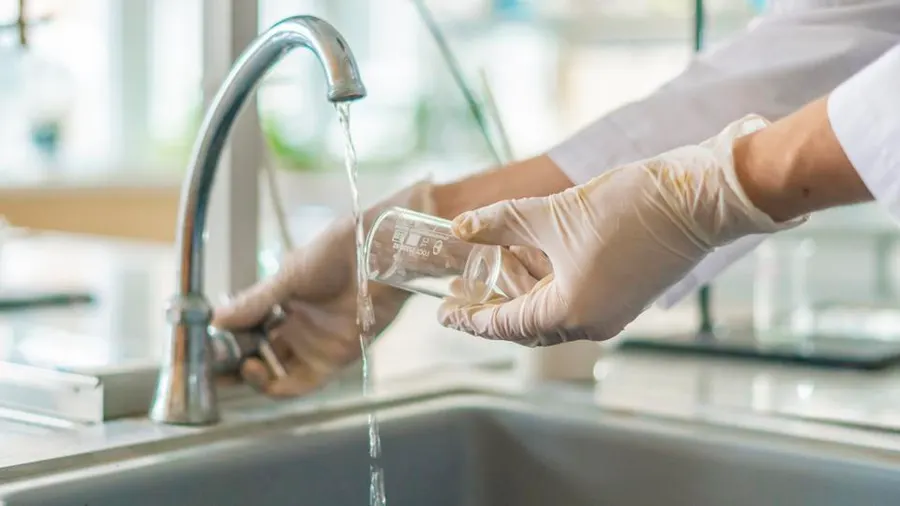Introduction
Ah, the simple joy of turning on the tap and letting that clear liquid gold flow into our lives. But have you ever stopped to wonder about the quality of the water you so casually consume and use every day? Testing your water quality is like giving your home’s hydration a health check – it’s not just about clarity; it’s about ensuring the purity of what sustains us.
Imagine this: you’re at a restaurant, and the waiter hands you a menu. You don’t just blindly order the first thing you see; you scrutinize the details, ensuring what you’re about to indulge in aligns with your standards. Your water deserves the same consideration.
In this age of environmental awareness and health-conscious living, knowing the quality of your water is more important than ever. It’s not about paranoia; it’s about empowerment. Armed with knowledge, you can make informed decisions about your daily hydration and overall well-being.
So, let’s embark on this journey of water exploration. From the source to your glass, we’ll uncover the steps to ensure your water is not just clear but also clean, crisp, and worthy of being the lifeblood of your home.
How to Test Water Quality at Home?
1. Know Your Water Source
Before diving into the testing methods, let’s start at the very beginning – your water source. Water can come from various places: a well in your backyard, a municipal supply system, a nearby lake, or even a mountain spring.
Each source has its unique characteristics, and understanding where your water comes from is like deciphering the first chapter of a mystery novel.
If you’re drawing water from a well, consider the geological aspects of your location. Is your well dug into rock or soil? Are there industrial activities nearby? For those hooked up to a municipal supply, the water has likely undergone treatment processes, but it’s still worth checking for any post-treatment contaminants.
Knowing your water source sets the stage for effective testing. Different areas may face distinct challenges – from agricultural runoff to naturally occurring minerals. By understanding your water’s origin, you can tailor your testing approach to focus on potential issues specific to your locale.
In essence, becoming acquainted with your water source is akin to understanding the roots of a plant; it allows you to anticipate its needs and cultivate an environment where it can thrive.
So, before you start playing chemist with your water samples, become a detective and learn the story of the liquid that flows through your pipes. It’s the first step toward ensuring that every drop you consume is not just refreshing but also pure and nourishing.
2. Identify the Best Method for Your Home
Alright, you’ve got a handle on where your water is coming from. Now, let’s talk about the exciting part – testing! There’s no one-size-fits-all approach, so let’s explore the three amigos of home water testing: test strips, color disk powder kits, and laboratory water testing kits.
1. Test Strips
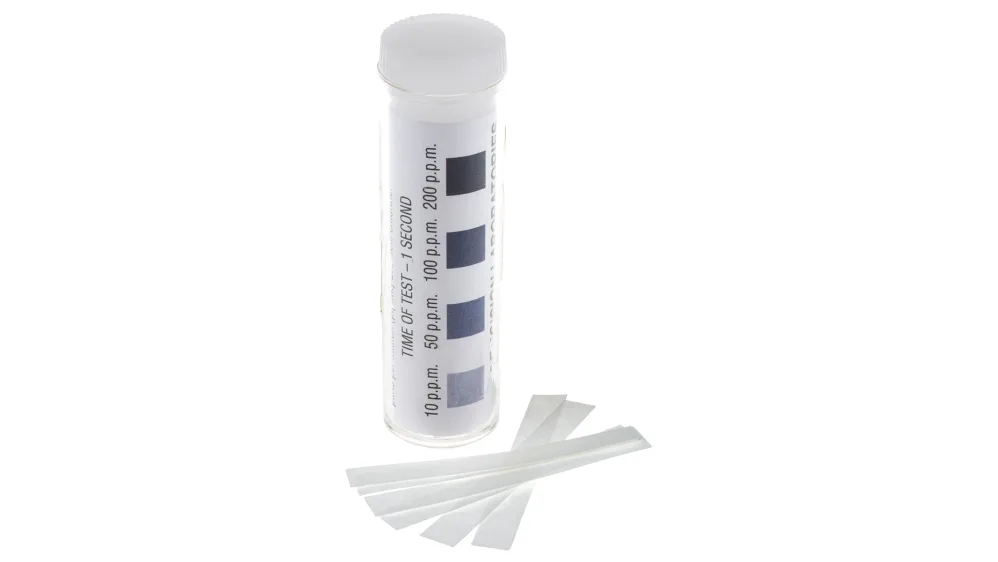
Enter the superheroes of simplicity – test strips. These nifty little things are like the home pregnancy tests of the water quality world. You dip them into your water, and they undergo a miraculous transformation, changing colors to reveal the presence of different contaminants.
Test strips are fantastic for a quick and easy assessment. They’re user-friendly, providing results in a matter of minutes. Plus, they’re budget-friendly and readily available at your local hardware store or online. Want a snapshot of your water’s health without breaking the bank or your brain? Test strips are your go-to.
However, keep in mind that they’re not as precise as other methods. They’re like the fast food of water testing – convenient and satisfying, but not gourmet. If you’re after a more nuanced understanding of your water’s composition, you might want to explore other options.
2. Color Disk Powder Kits
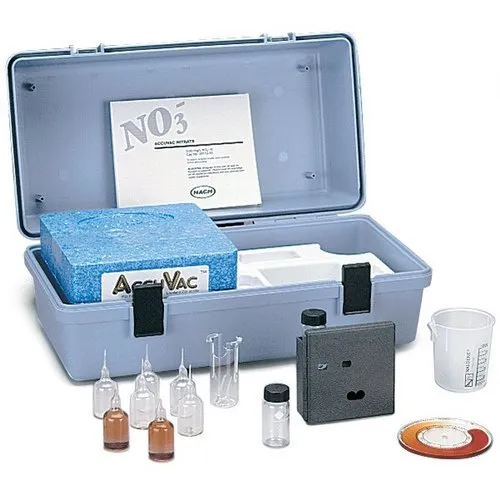
Step up your game with color disk powder kits – the middle ground between simplicity and precision. Think of these as the gourmet burgers of the water testing world. Instead of a test strip, you mix a powder with your tap water sample and compare the resulting color to a chart. It’s like a mini chemistry experiment in your kitchen.
The water testing kit offers a bit more accuracy than test strips, making them suitable for those who crave a more detailed analysis. They’re still user-friendly, but with a touch more sophistication. Color disk powder kits are readily available and strike a balance between ease of use and result reliability.
However, like any fine dining experience, they require attention to detail. Following the instructions meticulously ensures accurate results. If you enjoy a bit of hands-on involvement and want a more comprehensive look at your water’s makeup, color disk powder kits are your gastronomic choice.
3. Laboratory Testing
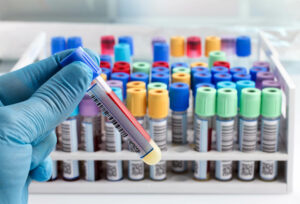
Now, let’s talk about the grandeur of water quality testing – laboratory analysis. If you want the deluxe, five-star treatment for your water, this is it. Laboratory testing involves sending a water sample to a professional facility for a thorough examination.
Picture this as sending your water off to a spa for a full-body wellness check. Labs can provide a detailed analysis, detecting a wide range of contaminants with precision. It’s the gold standard for those serious about the quality of water.
However, the regal treatment comes at a cost – both in terms of time and money. Lab results may take a bit longer to arrive, and the process is pricier compared to DIY methods. Reserve laboratory testing for those moments when you want the most comprehensive, accurate, and detailed insight into your water’s health.
In essence, whether you’re opting for the speed of test strips, the precision of color disk powder kits, or the thoroughness of laboratory testing, the key is to choose a method that aligns with your goals, budget, and comfort level. It’s your water, and you’re the director of this H2O blockbuster – choose your testing method and let the show begin!
3. Test for Specific Contaminants
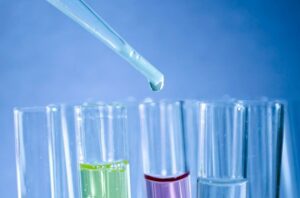
Alright, you’ve decided to take the plunge and test your water. But hold on – don’t just go in blindfolded. If there are specific villains you’re worried about lurking in your water, it’s time to tailor your investigation. Testing for specific contaminants ensures you’re not just conducting a generic sweep but honing in on the exact threats you want to identify.
Identify Your Water’s Nemeses:
Imagine your water as a secret agent infiltrating your home. It’s clean, it’s clear, but there might be hidden foes – biological contaminants that can cause harm. These can range from heavy metals like lead or copper to microbial intruders like coliform bacteria or parasites.
By pinpointing the specific contaminants you’re concerned about, you can deploy the right testing method like a targeted mission.
Choosing the Right Test:
Different testing (water) methods are specialized for specific contaminants. For instance:
Lead Testing: If you live in an older home with lead pipes or suspect lead contamination, there are specific tests designed to detect lead levels accurately.
Bacterial Testing: If you’re worried about bacteria in your water, particularly if it comes from a well or a natural source, there are tests specifically tailored to identify microbial contaminants.
Chemical Testing: Concerned about pesticides, herbicides, or industrial pollutants? Certain tests can focus on detecting specific chemicals, providing a detailed analysis of your water’s chemical composition.
Consider Your Surroundings:
Your geographic location and local industries can influence the contaminants that might be present in your water. If you live near farmlands, agricultural runoff could be a concern. In industrial areas, there might be a higher risk of chemical pollutants. Understanding your surroundings helps you anticipate potential threats and choose the right tests accordingly.
Regular Checkups for Peace of Mind:
Even if you’re not facing an immediate threat, regular water testing for specific contaminants can offer peace of mind. It’s like scheduling routine health checkups – catching potential issues early ensures that your water remains a clean, clear, and safe part of your daily life.
Consult with Experts:
If you’re uncertain about which specific contaminants to test for, or if you’re dealing with a complex water source, consider consulting with water quality experts or local health authorities. They can provide guidance on the most relevant tests based on your concerns and geographic location.
In the end, testing for specific contaminants is about being proactive and targeted in your approach. It’s not about unnecessary panic but about understanding and addressing potential risks. So, gear up with the right tests, identify your water’s adversaries, and ensure that the liquid flowing into your home is a hero, not a villain.
4. Follow Directions to Ensure Accuracy
Congratulations! You’ve chosen your testing method and are ready to unravel the mysteries within your water. Now, before you dive headfirst into the experiment, there’s a crucial rule: follow the directions. Think of it as the GPS guiding you through uncharted waters – without it, you might find yourself lost.
Precision in Every Drop:
To test water quality is a bit like baking. Each step matters, and deviations can affect the final product. Whether you’re using test strips, color disk powder kits, or preparing a sample for laboratory testing, the instructions are your recipe for success.
Measure Twice, Test Once:
Precise measurements and adherence to recommended procedures ensure the accuracy of your results. If the instructions say to let a sample sit for a specific duration or mix a certain amount of powder, follow suit. Skipping steps or improvising might yield inaccurate results, defeating the purpose of your water quality investigation.
Avoid Contamination:
Ever tried baking cookies with a dirty spoon? It’s a recipe for disaster. Similarly, contamination can throw off your water test results. Ensure that your testing equipment is clean, and follow any guidelines on sample collection. Contaminating the sample or the testing apparatus can lead to misleading results.
Repeat for Reliability:
If your test kit suggests repeating the process for confirmation, don’t shy away. Replicating the test ensures reliability and helps rule out any anomalies. It’s like double-checking your calculations before submitting a crucial report.
In the world of water testing, precision is your ally. The more accurate your results, the better you can understand your water quality and take informed actions if needed. So, don your lab coat, embrace the role of a meticulous scientist, and let the accurate testing adventure begin!
5. Consult EPA and State Guidelines
Now that you’ve conducted your water test, it’s time to compare your findings to the rulebook. In the United States, that rulebook is provided by the Environmental Protection Agency (EPA). State and local health departments often have their own guidelines as well. It’s like getting the report card and cross-referencing it with the school’s grading system.
Why EPA and State Guidelines Matter:
The EPA and state guidelines for drinking water regulations set the standards for safe drinking water. They specify the acceptable levels of various contaminants in drinking water to ensure it meets health and safety standards.
While your test results might give you a snapshot of your water’s current state, comparing them to these guidelines provides context and determines if any action is needed.
Understanding Your Report:
Your water test results may include concentrations of different substances, but what do these numbers mean? This is where the EPA and state guidelines come into play. They provide the thresholds for acceptable levels of contaminants.
If your test results exceed these levels, it’s an indication that your water may pose health risks, and corrective measures might be necessary.
Taking Action:
If your results fall within the guidelines, congratulations! Your water is likely in good shape. However, if there’s a mismatch, don’t panic. It’s a call to action, not a cause for despair. Consult the guidelines to understand the severity of the situation and reach out to local health authorities or water quality professionals for advice on the next steps.
Keep Up with Changes:
Water quality can change over time due to various factors. Periodic testing, coupled with regular consultation of EPA and state guidelines, ensures you stay informed about the evolving health of your water source.
In the end, comparing your test results to EPA and state guidelines is like putting your water quality report card through the grading system. It provides clarity on where you stand and guides you toward the necessary actions to keep your water safe and pristine.
So, arm yourself with knowledge, check those guidelines, and ensure that your water passes with flying colors!
Conclusion: Unveiling the Secrets of Your Water
In the grand tapestry of our daily lives, water weaves an essential thread, sustaining us and our homes. The journey to test your water quality at home is not just a scientific exploration; it’s a commitment to the well-being of yourself and your loved ones.
Through this voyage, you’ve become acquainted with the origins of your water, learning to decipher its unique story. Whether it flows from a well beneath your backyard or emerges from a municipal treatment plant, understanding its source empowers you to tailor your approach to water testing.
The testing methods – from the simplicity of test strips to the precision of color disk powder kits and the thoroughness of laboratory analysis – offer you a diverse toolkit. It’s like having a range of instruments in a symphony, each playing its part in revealing the composition of your water.
But the journey doesn’t end with the test results. The importance of following directions cannot be overstated. Much like navigating uncharted waters, adhering to the instructions ensures accuracy, reliability, and a true reflection of your water’s health. It’s a journey into the microscopic world within your water, where precision matters.
Consulting EPA and state guidelines is akin to checking the compass on your journey. These guidelines provide the benchmarks, the standards against which your results are measured. They are the beacons guiding you to safe shores, helping you interpret your water quality report and take appropriate actions if necessary.
As you conclude this exploration, armed with knowledge and armed with results, remember that water testing is not a one-time affair. It’s a recurring commitment to the health and safety of your household.
Periodic testing and adherence to guidelines ensure that you stay vigilant, adapting to changes in your water quality and maintaining the purity of this life-sustaining elixir. So, here’s to clarity, purity, and the assurance that the water flowing through your home is more than just H2O – it’s the essence of a healthy, thriving life.
FAQ: Quenching Your Thirst for Knowledge
How often should I test my water?
While an annual test is generally recommended, if you notice changes in taste, color, or odor, consider more frequent testing. Factors like changes in the water source, nearby construction, or industrial activities can also prompt additional tests.
Can I rely on home testing kits?
Absolutely! Many home testing kits are reliable when used correctly. Choose a kit that suits your needs, follow the instructions diligently, and you’ll get accurate results. For added peace of mind, consider periodic professional testing.
What if my test results show a contaminant above the guidelines?
Don’t panic. Consult the EPA and state guidelines for that specific contaminant. Depending on the severity, you may need to take corrective measures. Reach out to local health authorities or water quality professionals for guidance on the next steps.
Is testing necessary if I’m on a municipal water supply?
While municipal water supplies undergo regular testing, additional testing at home provides an extra layer of assurance. It helps you monitor changes in water quality, especially if your plumbing or local conditions could introduce contaminants after treatment.
